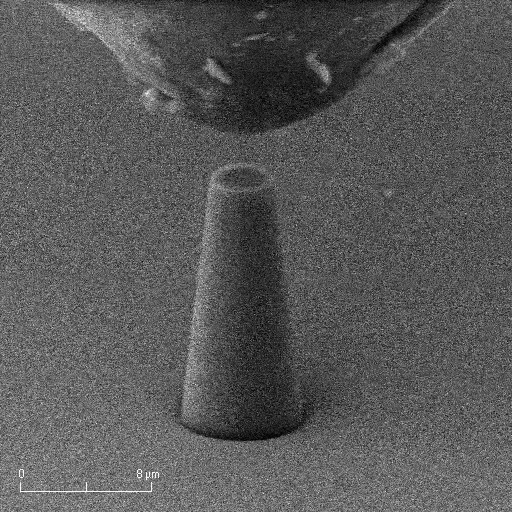The high strain rate behavior of materials is of enormous interest to product developers and the wider research community. Strain rate testing intersects an extremely wide range of market segments and is relevant to a variety of application areas, providing unique insights into how ceramics, electronics arrays, polymers, and so on, can withstand severe loading events.
At the macroscale, there are numerous proven methodologies for ultra-high strain rate testing (impact experiments, Kolsky pressure bar, etc.). However, the micro- and nanoscales remain comparatively unexplored due to the inherent limitations of the established testing methods. One of the foremost techniques used to explore the mechanical properties of sample materials is nanoindentation. Though incredibly valuable, nanoindentation tests typically employ quasi-static loading, which limits available strain rates to fairly low levels (<10-2s-1).
How to Achieve Ultra-High Strain Rates via Nanoindentation
The problem with high strain rate testing of materials via nanoindentation is that conventional micromechanical indenters with strain gage sensors, or load cells, have low resonant frequencies and poor sampling rates. This has the tandem effect of increased signal noise and low resolution due to slow feedback loops. Resolving load-displacement data at strain rates above 10-2s-1 requires a high data acquisition rate and extremely precise actuation frequencies. Only piezoelectric actuation and sensing offer that level of control for micromechanical testing.
Additionally, ultra-high strain rate testing via nanoindentation is facilitated by novel test methods like micropillar compression. Using a piezo-based nanoindenter and a microscale pillar of lithographically-generated or extracted sample material, it is possible to achieve strain rates up to 10,000 s-1. Owing to the sample’s extremely small dimensions relative to various test parameters (actuation velocity, inertia, wave travel time, etc.), fatigue, impact, and dynamic deformation phenomena can be acquired at ultra-high strain rates without interference.

Currently, fused silica micropillars exist as a proof of concept for how ultra-high strain rate testing can be carried out for numerous other materials with unexplored high-strain rate properties.
Read our full, in-depth article on Ultra-High Strain Rate Testing with a case study on fused silica micropillar compression for more details.
Ultra-High Strain Rate Testing with Alemnis
Alemnis specializes in micro- and nanoscale indentation testing for a wide range of materials, leveraging our pioneering Alemnis Standard Assembly (ASA) with proprietary high- and ultra-high strain rate modules. For strain rates of 1,000 s-1 and above
Alemnis offers four distinct configurations:
- VHS-1-1, for impact/fatigue testing at strain rates of up to 1,000 s-1 using a piezo stack actuator with a normal load range of 1N.
- UHS-1-1, for impact/fatigue testing at ultra-high strain rates of >1,000 s-1 using class-leading SmarTip actuation with a range of +/- 175V.
- UHS-1-3, for ultra-high strain rate tests with additional tri-axial sensing (normal and lateral force) with a lateral load range of +/- 0.1N.
- UHS-3-3, a complete ultra-high strain rate testing solution with tri-axial sensing and actuation enabling novel nanotribology applications.
If you would like more information about integrating the Alemnis ASA for your high strain rate testing objectives, simply contact a member of the sales team today.



